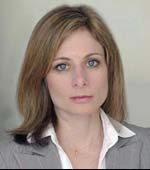Lisa Randall’s intuitive approach to physics and accessible writing style have brought her critical acclaim and attracted widespread popular interest in the complex field of theoretical physics. She presents her theory on the geometry of space, extra dimensions, and gravity in her book, Warped Passages: Unraveling the Mysteries of the Universe’s Hidden Dimensions, which is also the title of her talk for the William C. Ferguson Science Lecture at 11 a.m. Feb. 7 in Graham Chapel, as part of the Assembly Series.

Einstein introduced us to the strangeness of our world with his General Theory of Relativity. But Einstein’s theory about matter, space, gravity and time seems incompatible with the theory of quantum mechanics, which governs the microworld of quarks and leptons, and physicists have been searching for ways to make a happy marriage between the two. In 1999, Randall and Raman Sundrum of Johns Hopkins University co-authored what many consider two of the most important scientific papers on extra spatial dimensions, explaining how our visible world of four dimensions could be embedded in a higher-dimensional universe. Her work has influenced advocates of string theory, and technology may be coming closer to verifying string theory and Randall’s theory. When the new Large Hadron Collider in Geneva, Switzerland begins operations next year, it may have enough energy to produce particles that travel in or through an extra dimension, or even produce microscopic black holes. Evidence of extra dimensions could signal a new era in physics.
Randall earned bachelor and doctoral degrees in physics at Harvard University and held professorships at Massachusetts Institute of Technology and Princeton University before returning to Harvard as a professor of physics in 2001.
Warped Passages was included in The New York Times 100 notable books of 2005, and in 2006, Newsweek called her one of the most prominent theoretical physicists of her generation. In 2004, she was the most cited theoretical physicist in the previous five years.
She is a member of the American Academy of Arts & Sciences and a fellow of the American Physical Society, and has published articles in numerous publications including New Scientist, The New York Times, Nature, and Science.
The event is free and open to the public. Graham Chapel is located north of Mallinckrodt Center, 6445 Forsyth Blvd., on the Washington University Danforth campus.
For more information, call (314) 935-4620 or visit the Assembly Series Web page (assemblyseries.wustl.edu).